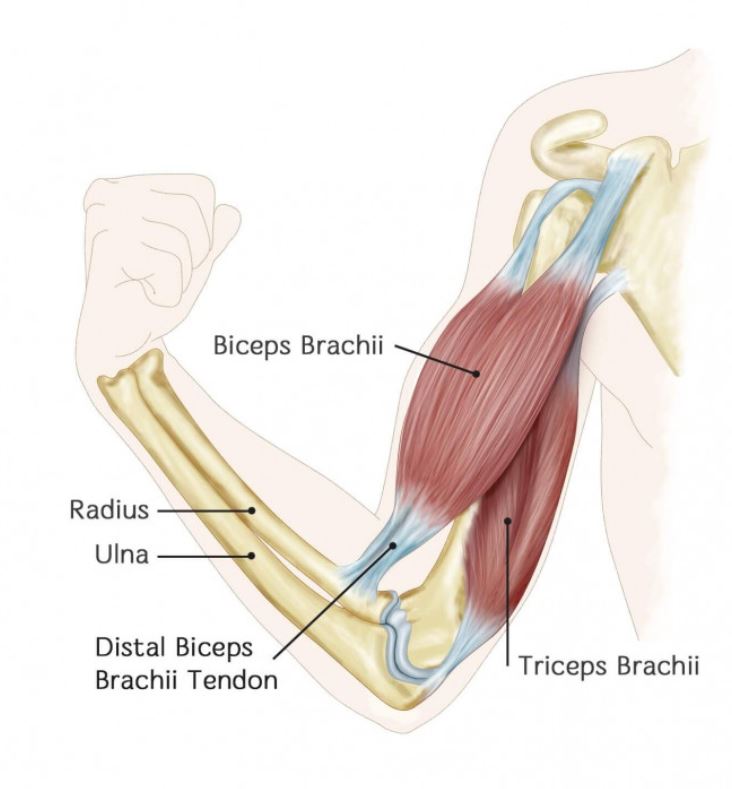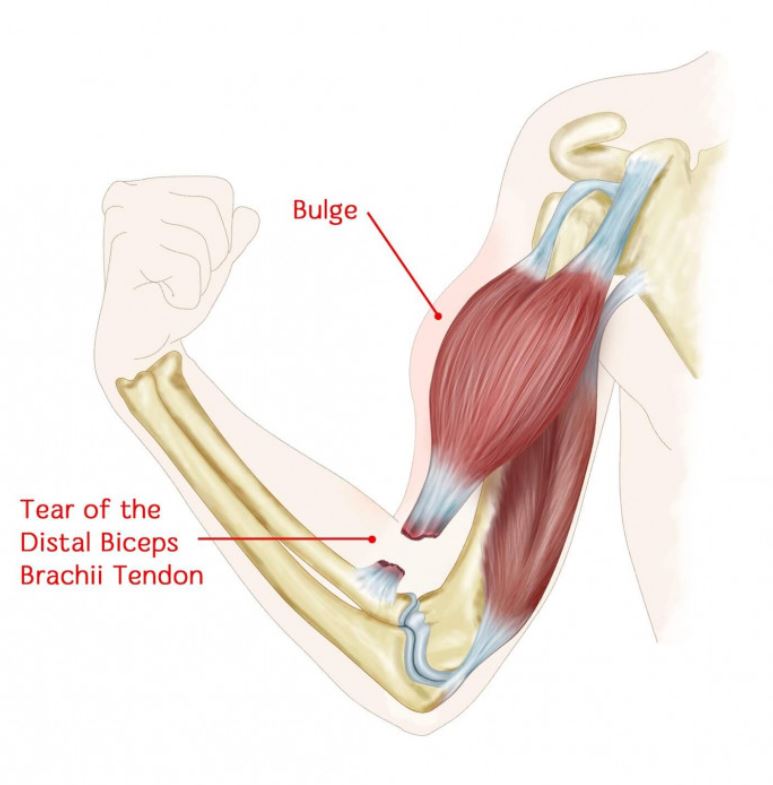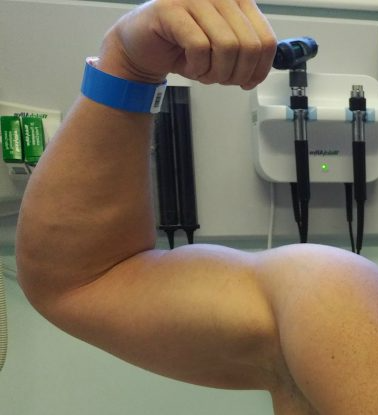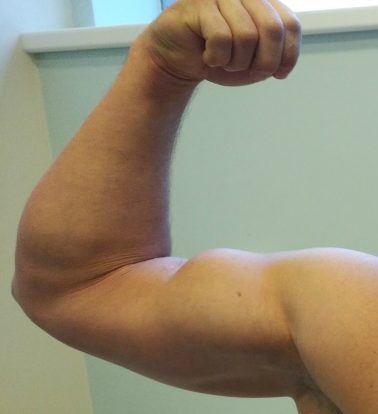Distal Biceps Tendon Tear
What is a Distal Biceps Tendon Tear?
The biceps is a muscle that bends the elbow up (see picture). The distal end is by the elbow. Tearing usually occurs with heavy lifting. Tears of the biceps can be either partial or complete.
What causes a Distal Biceps Tendon Tear?
Bicep tendon tears usually occur with heavy lifting. When this happens the tear is usually a complete tear (see picture). Sometimes tears can occur from overuse such as repeated moderate lifting. These tears are usually partial tears.
What are the symptoms of a Distal Biceps Tendon Tear?
PARTIAL TEAR: If the biceps tendon tears partially then the person may experience pain in the front of their elbow with bending or turning the hand over against resistance. It may hurt to push on the tendon in the front of the elbow. The biceps usually looks normal.
COMPLETE TEAR: If the biceps tendon tears completely off the bone, then the person may notice the biceps bunching up higher than on the other side (see picture). They may also notice weakness and pain with moving the elbow. Cramping can also occur. There may be some tenderness when pressing on the biceps area. The biceps muscle may feel floppy and soft.
How to tell if you have a Distal Biceps Tendon Tear?
When a person gets a biceps tendon tear they usually experience pain and if it is a complete tear they will experience weakness. They will also notice their biceps looks different.
Your doctor will do a physical exam. X-rays are important. An MRI is usually helpful.
How are Distal Biceps Tendon Tears Treated?
If the partial tear is diagnosed right away then the solution involves resting the biceps for six weeks. After six weeks a light-weight high-repetition weight lifting program is begun. During the recovery process the person should try not to take NSAIDs anti-inflammatory medications or other types of pain pills.
If the tear is not diagnosed right away then the treatment becomes more complicated and can involve physical therapy or injections of things such as whole blood or platelets or stem cells. If these don’t work, surgery to repair the partially torn tendon is an option.
When a person has a complete tear, surgery is usually performed. Without surgery the person will usually continue to have weakness and pain and deformity of the biceps muscle.



Normal biceps
